The 30mm f/3.5 Lydith II is another remake (of a remake) of a classic lens from Meyer Optik Gorlitz. It’s moderately wide, fairly slow lens with a short minimum focusing distance and a couple of interesting character tricks up its sleeve.
This is actually the second of the new versions of the new Meyer lenses I’ve reviewed. The first – a lens that I enjoyed a great deal – was the Meyer 100mm 2.8 Trioplan II. You’ll note the both these lenses are suffixed with ‘II’ – they are both version II lenses. They are both also made by the newer owner of the Meyer Optik brand, a company called OPC Optics. I talked a bit about OPC and how I came to be working with them on these reviews in my previous article. But the short version is, these guys effectively saved these remake-lenses when – under less than ideal circumstances – the previous owners of the brand went out of business.
I for one am really pleased they saved them too. I also talk a bit about the price and value of these lenses in my 100mm review. Some might find reason to quibble the price. I do not. I love the fact that there are companies out there that are bringing lenses to market that break the away from the normal approach of just trying to make the “best” lens possible, and there is always going to be a premium to pay for anything that’s made in smaller quantities.
Objectively speaking, the Meyer lenses are not the “best” lenses on the market, nor are they the cheapest, but neither of these factors should detract from what they bring to the marketplace. They are unusual, specialist optics that render images in a way that rules them out for a lot of people, but rules them in for a small niche of photographers who like what lenses with character can bring to a photo.
This is, of course, is exactly what makes them interesting to me. I should say, I’m quite biased when it comes to this stuff. I too am bringing some highly unusual and higher-cost lenses to market, so I would think this sort of stuff, wouldn’t I?! But more on that story another day…
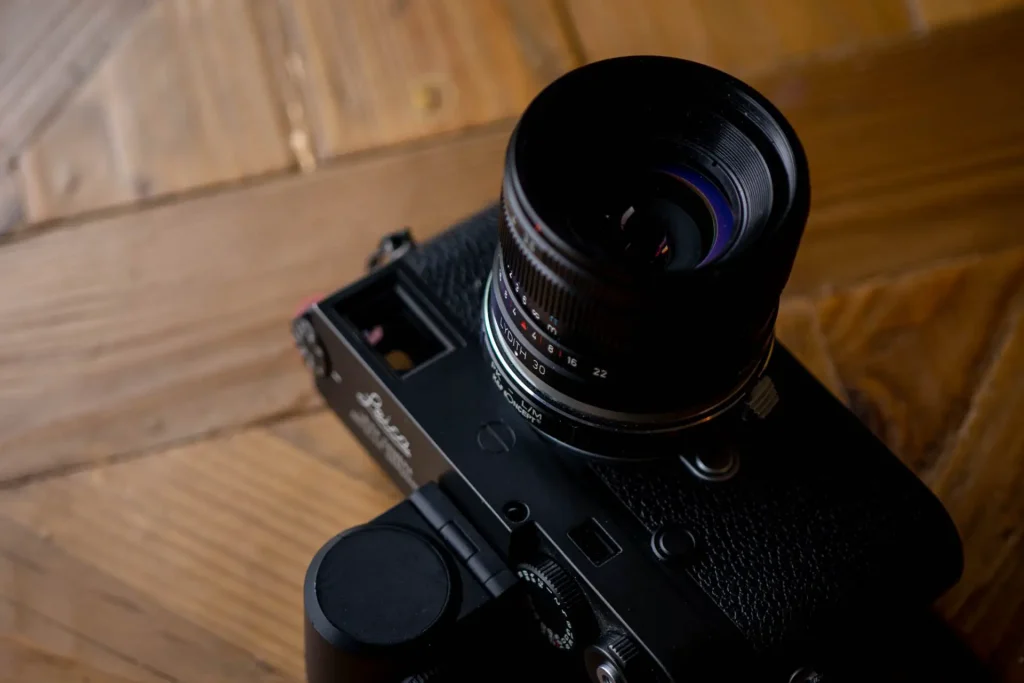
30mm f/3.5 Lydith
The 30mm f/3.5 Lydith, as I have already said, is a version II of the remake of this lens. I have only once seen one of the lenses made by the previous brand, and honestly don’t remember much about it. That said, OPC Optics talk in their literature of how they improved both the mechanical feel and optical quality of the lens in the process of remaking the remake. Of course, how it compares to the other more recent version is one thing, how it compares to the original lenses from the 60s/70s is another.
The original lenses – at least as far as I can work out – had a mixed reputation. I recently read for example that some of the older lenses were prone to having decentered/tilted optics that often resulted in half of the image being softer than the other half. Apart from this though, I must admit, I went into the process of reviewing this lens without much prior knowledge. I’ve owned a Lydith before, but I don’t remember a huge amount about it. In fact, when I asked Simon Forster off of the Classic Lenses Podcast about it, he told me that he’d not really used one either. He knew they were ok, but that there were lots of other similarly priced lenses of a similar focal length that were just that bit more interesting to him. Not a good start, I suppose…?!
My Preconceptions
Despite not really knowing what to expect, and despite being pleasantly surprised by the Meyer 100mm in terms of how much of an objective “improvement” over the older lens I had tried was, and despite my contact at OPC telling me the 30mm f/3.5 Lydith was a very different type of lens to the 100mm, I still expected to find it to be soft/glowy wide open and then only really sharpen up stopped down. I wouldn’t have been disappointed by that either, it’s just what I expected to find.
Optical Character Traits
I expected wrong. In reality, the 30mm f/3.5 Lydith is a fairly sharp lens from wide open – or at least it is in the centre. There isn’t any glow to the sharper centre area of the image at all. Though, the sharpness does fall off quite a bit toward the edges and especially into the corners.
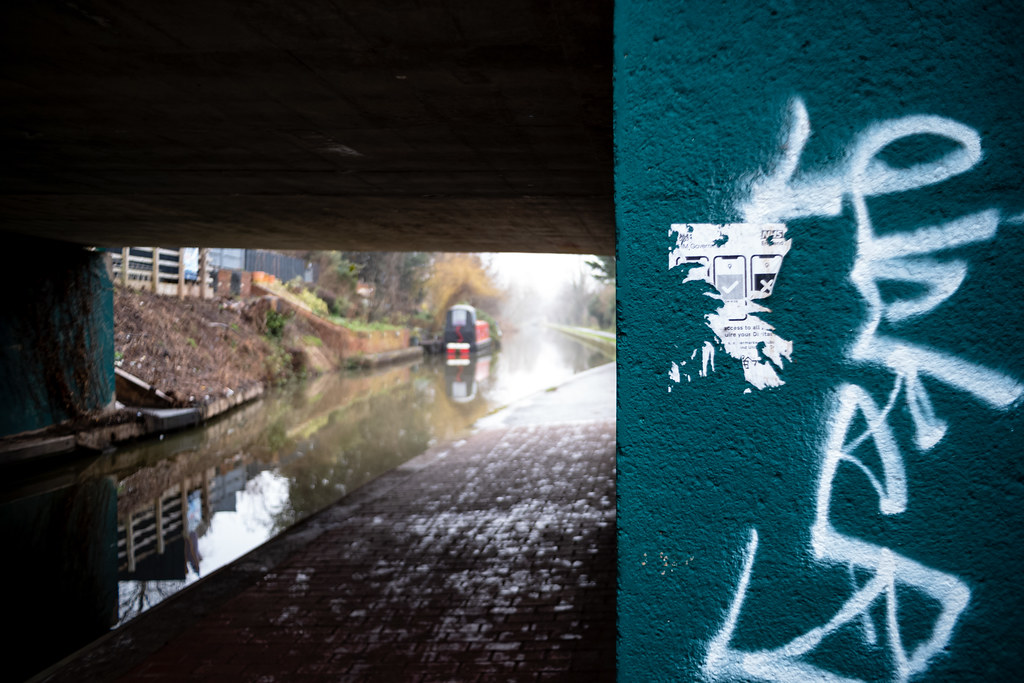
In fact this edge softness doesn’t really completely disappear – even stopped down to f/8 I found the corners somewhat lacking in sharpness.

That said there seems to be plenty of contrast. A bit like the Trioplan, likely because of the modern coatings, there’s lots of contrast pop. Though unlike the Trioplan, the contrast is there even wide open. As is the nice colour rendition.
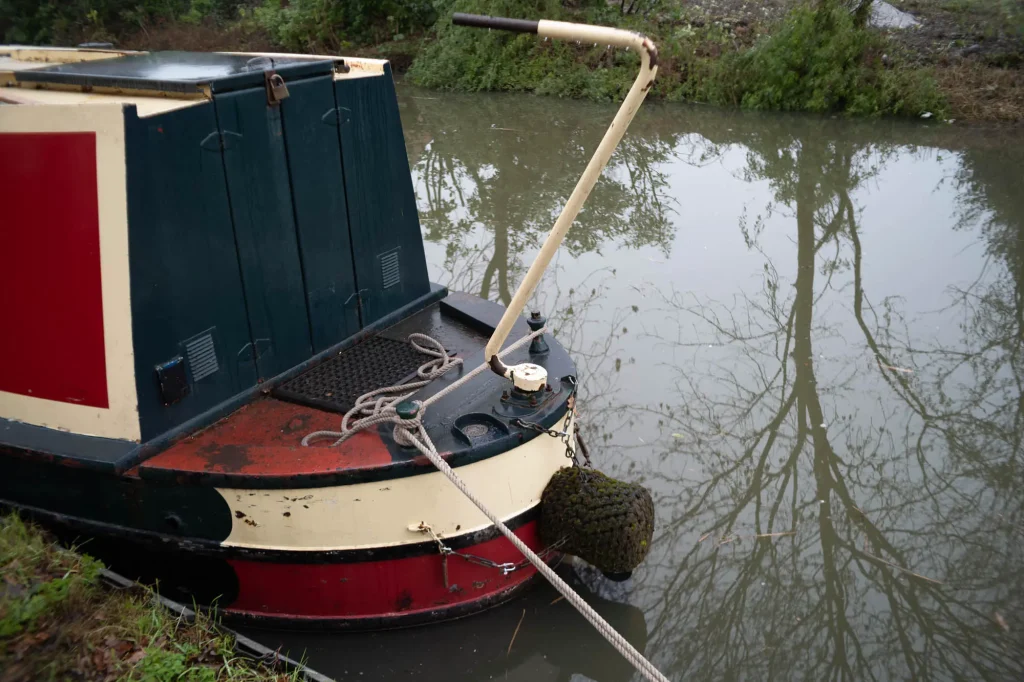
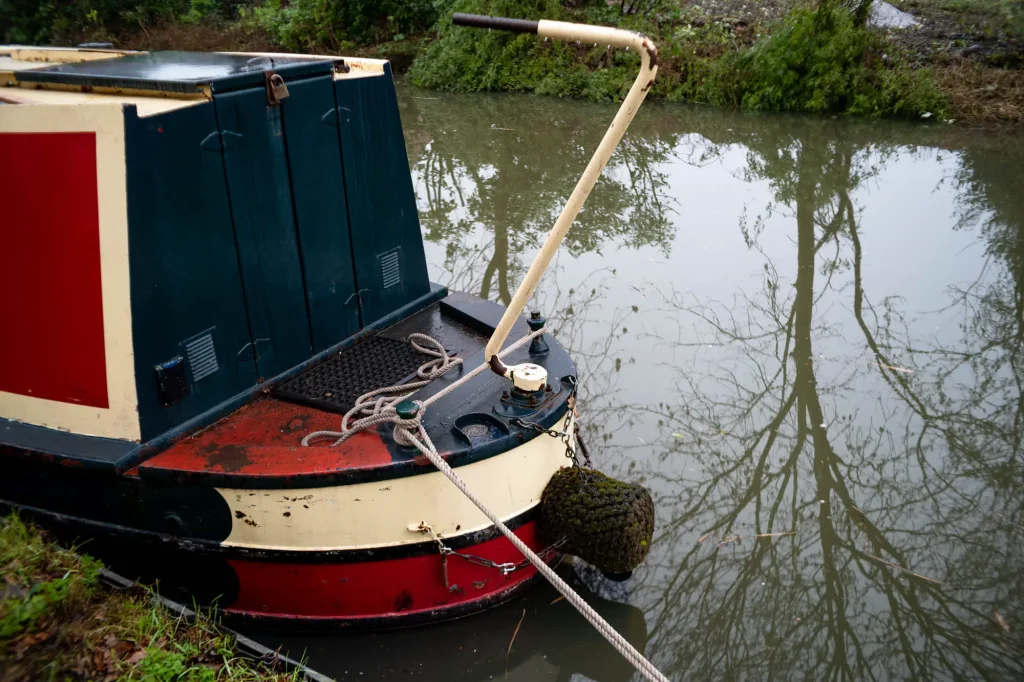
Straight out of camera vs. my contrast tweaks – I didn’t need to adjust the image much
I’d expected more of a bubbly look to the bokeh, but in the end struggled to get the strong look I was expecting. There’s definitely a slightly edgy look given the right circumstances, but it’s not the full-on bubble bokeh the the Trioplan brings to the table.
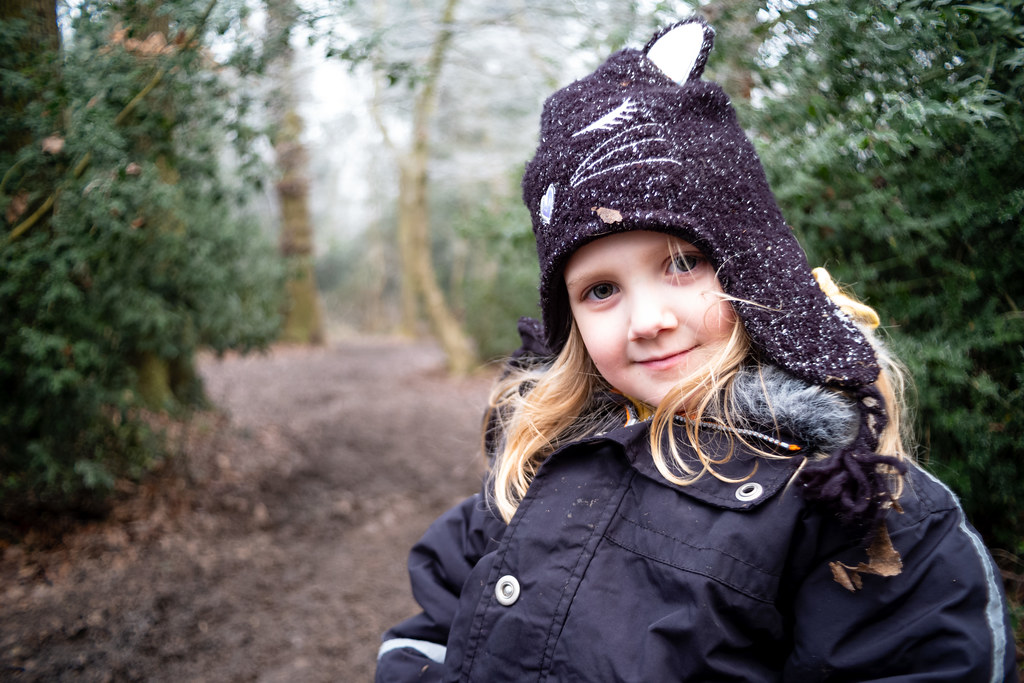
In fact, if the Trioplan’s signature character trait is its full-on bubble bokeh, the 30mm f/3.5 Lydith’s signature is the rainbow flare. This flare is almost the sort of look you might achieve with a plastic lens. Quite a lot of inexpensive cameras (such as the Vivitar UWS) bring this sort of flare to the table.
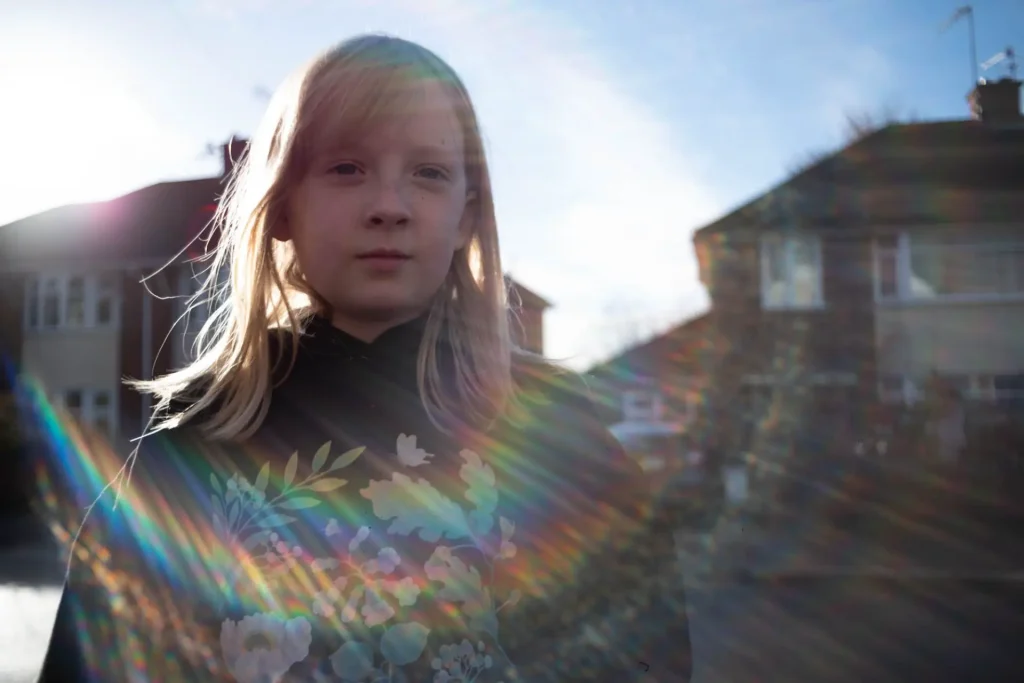
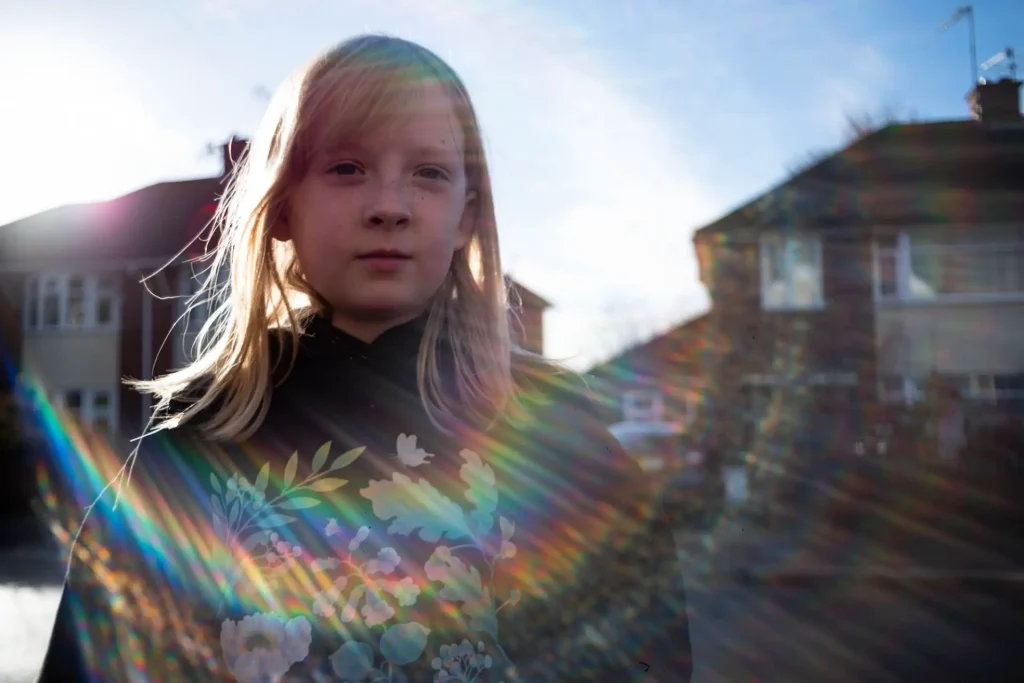
Straight out of camera vs. my tweaks – more vintage lenses would like be more impacted by veiling flare
Of course, with cheap plastic lenses, you don’t tend to also get the contrast and good colours. And quite often lenses that flare to this degree also suffer a lot of veiling flare alongside the lens flare. With the 30mm f/3.5 Lydith, you can harness this slightly crazy flare without the whole image becoming totally washed out. For this flare alone, I could see this lens being popular for video – this sort of flare seems quite trendy at the moment.
As when I wrote the Trioplan review, I haven’t felt entirely motivated to explore further optical aberrations. I’ve seen a bit of distortion, of course it vignettes, I’m sure there’s colour aberrations too if you look close enough. I’m just not sure there’s much point exploring those things with a lens that makes no excuses for being flawed.
What the 30mm f/3.5 Lydith brings to the table is a combination of good contrast from wide open that brings decent 3D rendering, slightly unusual bokeh and its signature flare. Like the Trioplan and indeed my favourite lens the Zeiss 50mm ZM Sonnar, what makes this lens interesting is a combination of classic and modern character traits.
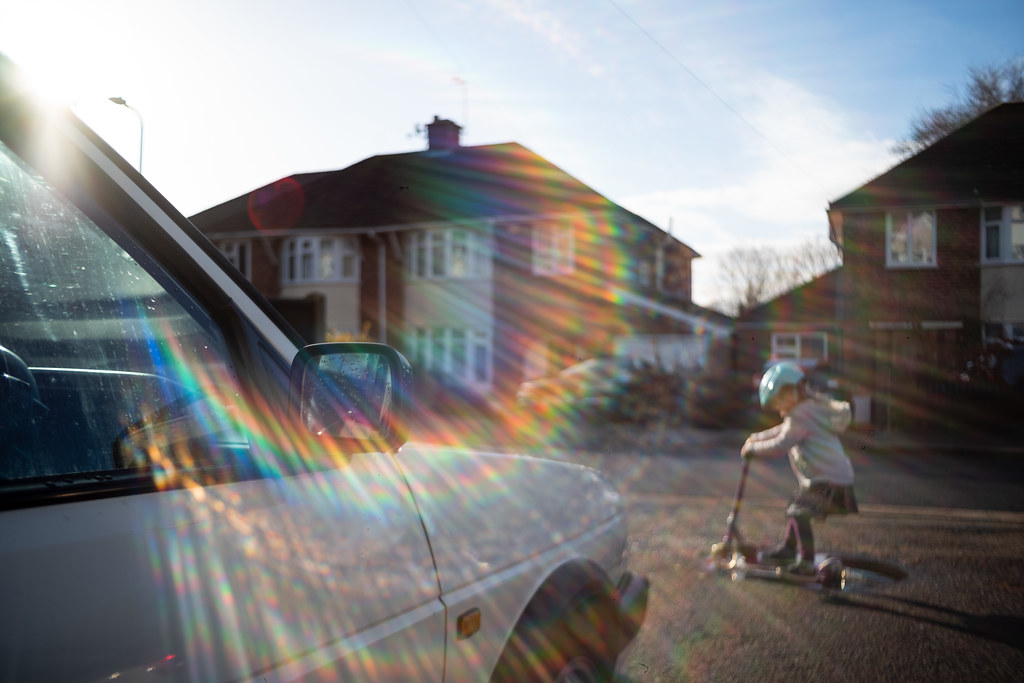
The 30mm f/3.5 Lydith in use
When it came to my preconceived ideas about how it would feel mechanically – having recently shot the 100mm – I actually underestimated the 30mm f/3.5 Lydith. When I shot the Trioplan, I found a lens that whilst feeling incredibly solid and very well made, also has a very slight texture to the feel of the focus and aperture controls. I spoke to my contact at OPC Optics about this and was reassured that they had improved upon this. Funnily enough, had I actually tried the 30mm f/3.5 Lydith I would have found this to be the case.
Like the Trioplan, the aperture control isn’t clicked, but unlike the Trioplan I reviewed, it rotates with a well-damped perfectly smooth feel. The focus control is better still too – it is a lot more damped than a modern Leica lens (for eg) but it is very silky!
For all the smoothness though, it isn’t entirely without flaw. The focus and aperture controls are right next to each other and have the same type of knurl. The result of this is that I just found myself needing to think a little bit too hard about what I was doing when I was grabbing the lens to change settings with the camera to my eye. I’m sure I would get used to it, and I can see looking at the lens why it has been designed this way, but it felt worth a mention.
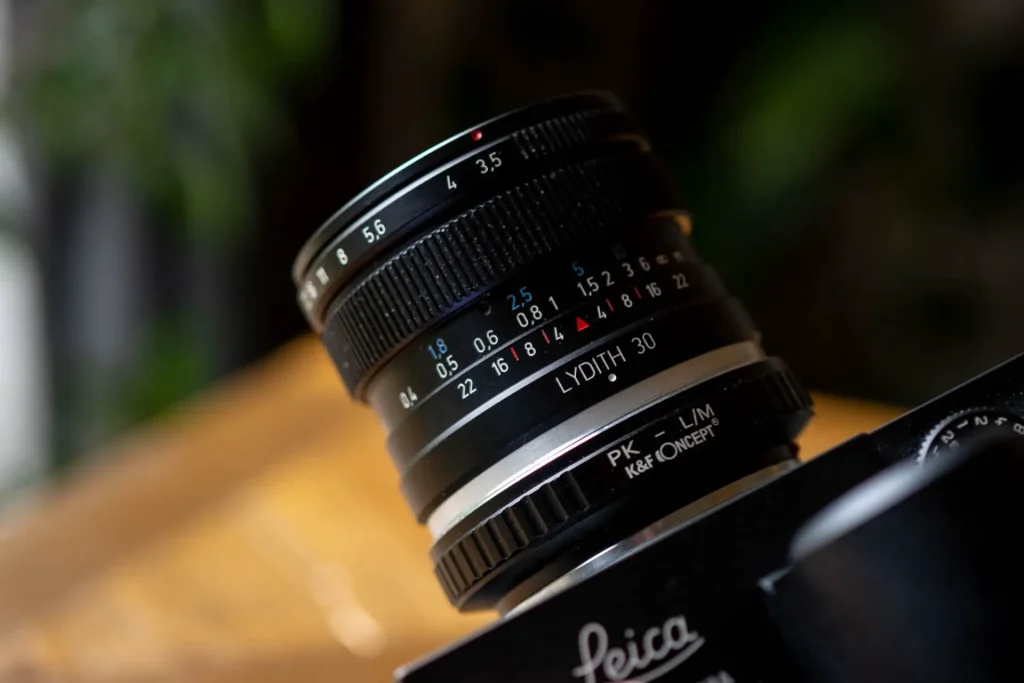
Camera Compatibility
This particular copy of the 30mm f/3.5 Lydith is a Pentax K mount but like the Trioplan it lacks any electronic or mechanical connections to the camera. None of the other mounts the these lenses come in have any form of interface with the cameras they are designed for either. To this end, they are most easily used with modern cameras that have live view.
If you do choose to shoot this lens on a film camera or older DSLR, the result of this is that – like when using a manual stop down lens – stopping down the lens darkens the view in the finder. As such, framing and focusing are best achieved with the lens wide open. Then, when you’re ready, you stop the lens down manually and shoot.
How this plays out in terms of metering will depend on the camera you mount it to, but I had thought I’d largely overcome the issue for my film photography with it by using the 30mm f/3.5 Lydith on a Pentax ME Super. In theory, the ME super should work quite well as it is designed to work with older manual stop down lenses and still meter.
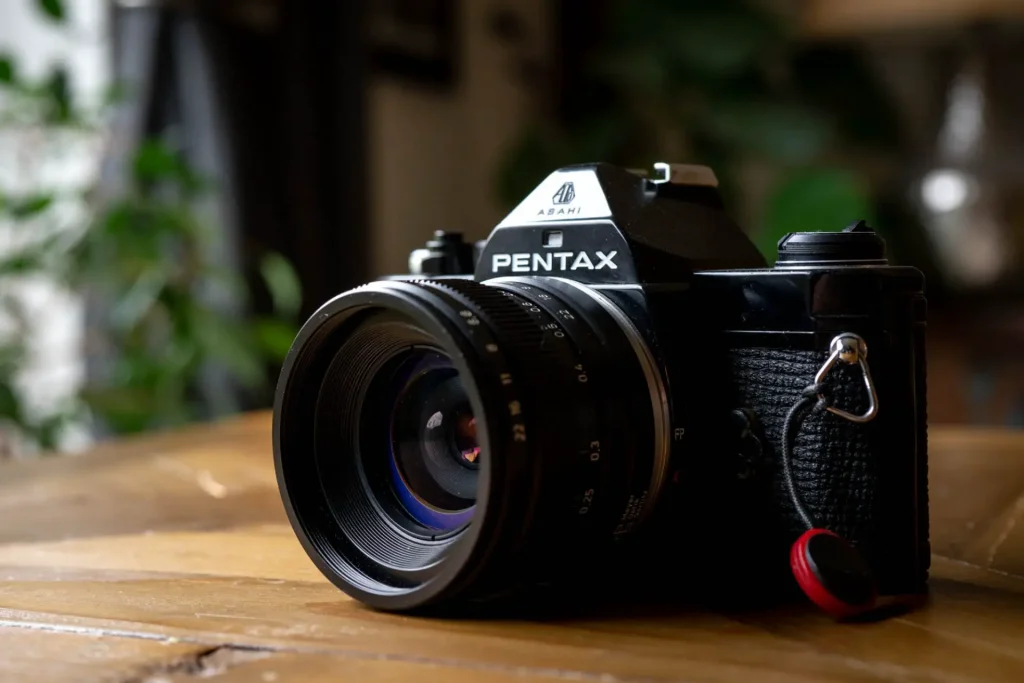
Unfortunately, when I took the ME Super with the 30mm f/3.5 Lydith mounted to the front I first found that I don’t actually like how the ME Super works (as described in my recent review), and that for some reason the lens was throwing out the meter’s results. I’m not quite sure why there was a metering issue. The lens hasn’t caused any metering problems on my M10-P, and the ME Super hasn’t given me any trouble metering with any other lens. Regardless, the result of the camera’s incompatibility with me, and the lens’s metering-incompatibility with the camera is that I gave up trying to shoot film with it after only a few shots.
Focus Throw / Close Focusing
Whilst I did find this slightly frustrating, all was forgiven when shooting the 30mm f/3.5 Lydith on the M10-P. I’m very used to shooting with the M10-P as a live view camera now, so found the process of shooting a wide angle fairly slow lens quite easy. Unlike the Trioplan that lacks so much in contrast that focus peaking just doesn’t work until you stop right down, the Lydith has plenty of contrast wide open so focus peaking worked without any issues at all.
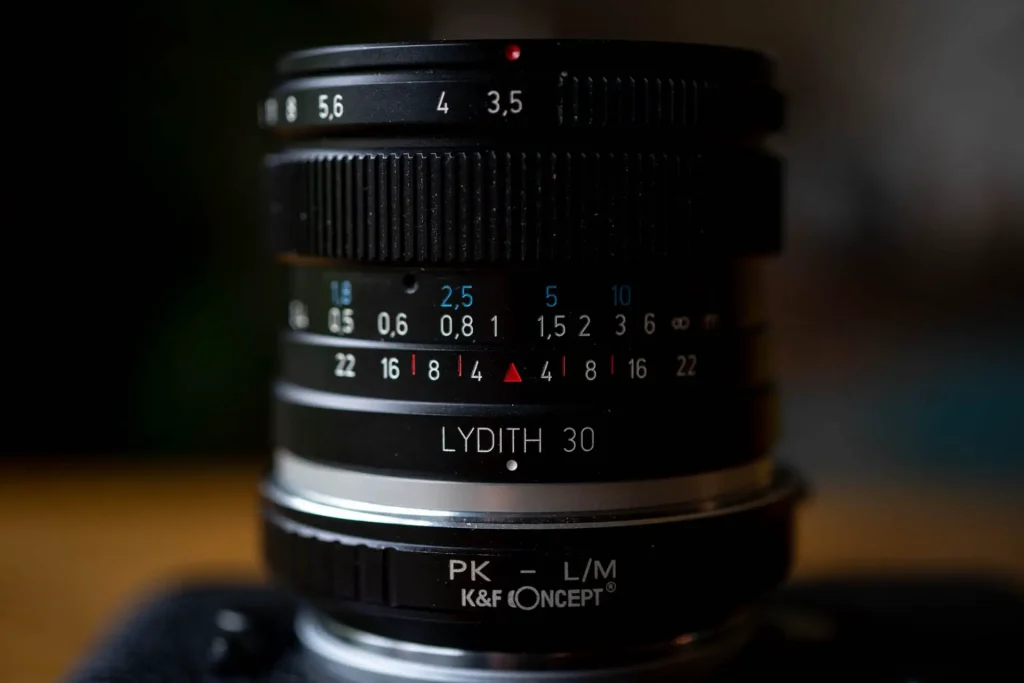
In fact, the only real problem I had was getting used to the really long focus throw. Because the 30mm f/3.5 Lydith focuses right down to 15cm, if you take close and distance-focus images in quick succession, the focus throw can feel extremely long. Of course, I imagine much of this experience for me could be put down to the fact that I was testing the lens and therefore not using it how I might if I was shooting it more “normally”. And actually, if you look at the top of the lens, you can see the throw for “normal” shooting distances is pretty short.
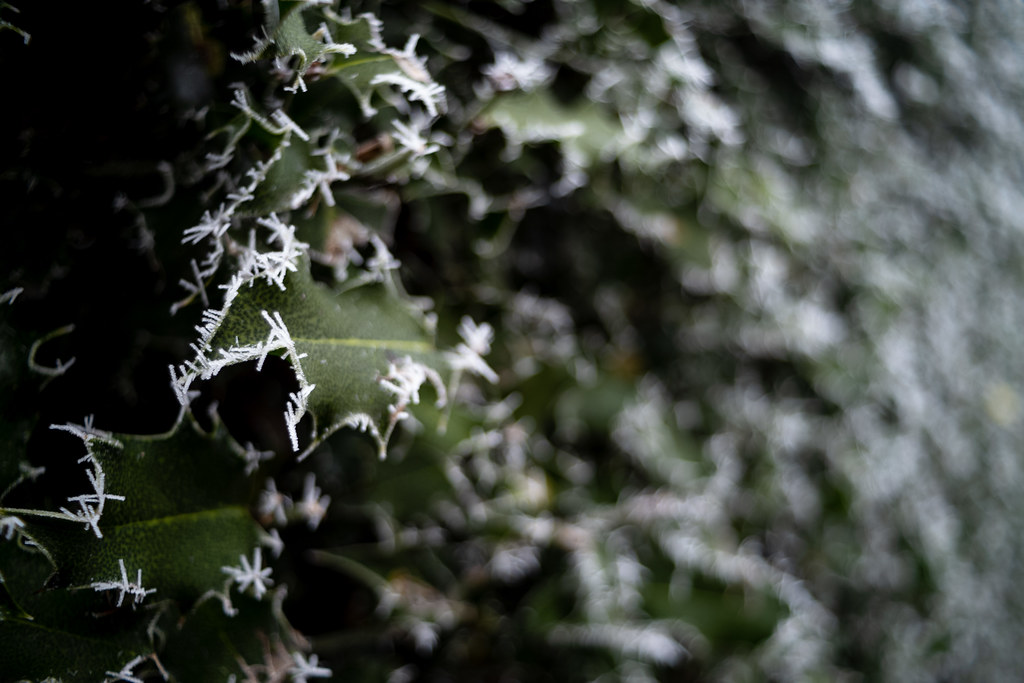
It’s also probably a little daft to complain about the long focus throw when it’s effectively a product of the close focusing which, in itself, is one of the selling points of the lens. Especially as I actually really enjoyed the novelty of being able to focus so close on a few occasions. I’m no macro photographer, but the combination of character traits made for some really interesting close-ups I thought.
30mm f/3.5 Lydith Photos


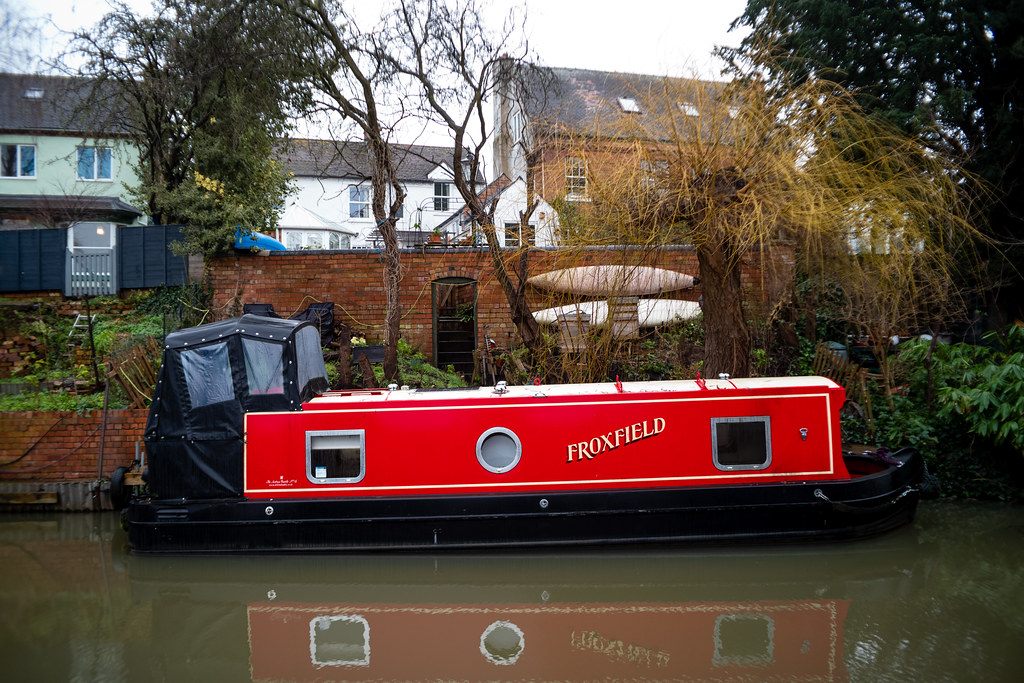
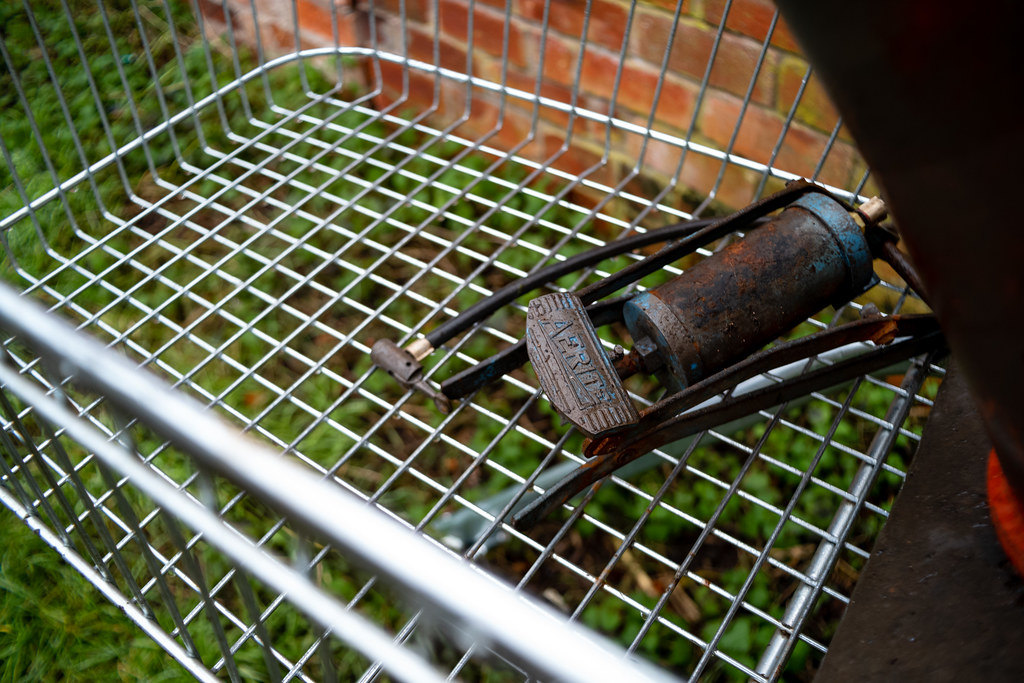
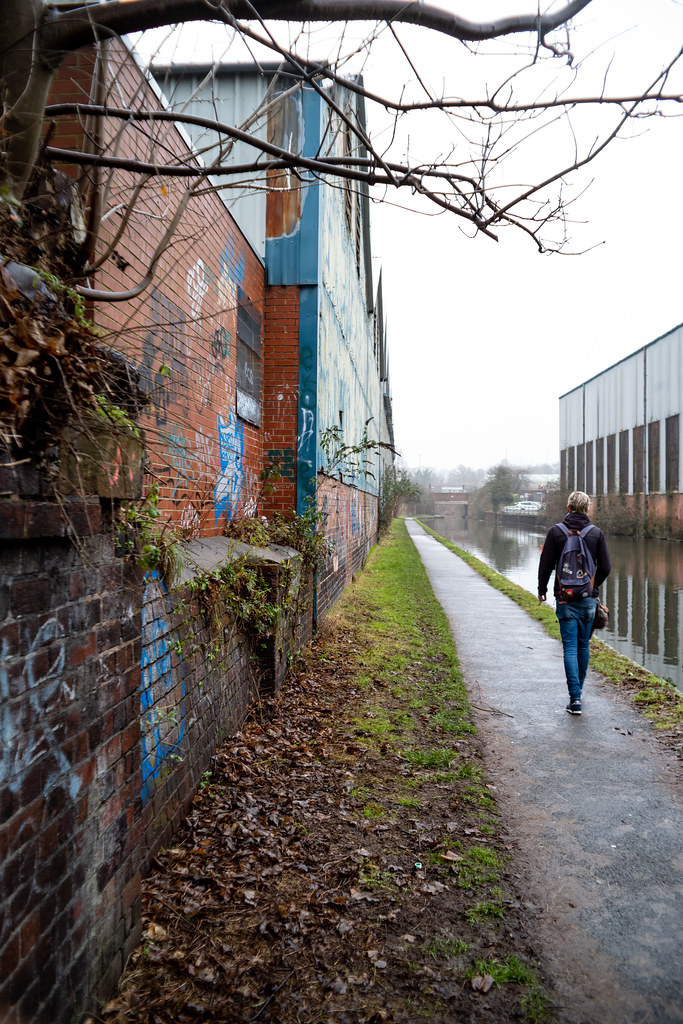
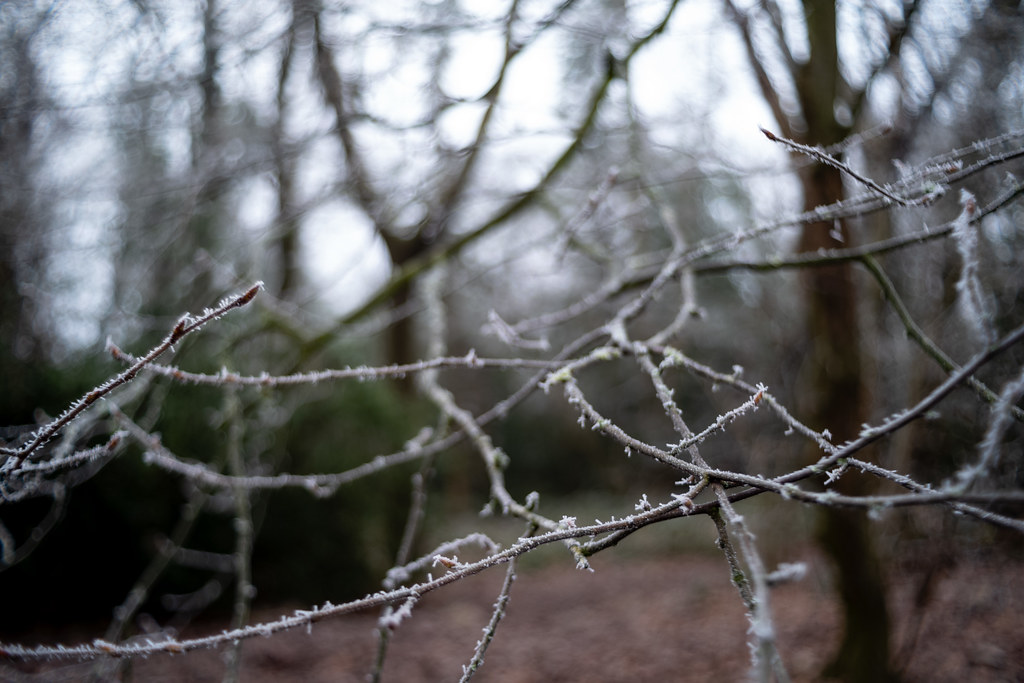
Final Thoughts
As with the 100mm Trioplan, I can predict with 100% certainty that there will be a significant volume of people who would look at this lens and wonder why on earth anyone would spend the €899 OPC price tag on such a lens. As I have already said, I talked about the price and value of these new Meyer lenses in my 100mm review, so if you want to know my wider thoughts on the subject, you can read them here. The gist is though, these new Meyer lenses do offer something unique that will appeal to a niche audience – they don’t need to appeal to the masses, there are plenty of lenses that do that already.
There’s also those who will say they can get the same results from a classic lens for £30 off ebay. Broadly speaking, I disagree. Classic lenses are great, they come with their own unique character traits. But whilst that’s the case, they do come with years of use, potential issue with dust, dirt, fungus etc. This might not be an issue for some people, in fact for many, part of the fun is finding a “good copy” and enjoying the variations in character traits all the years of existence can bring to the table.
But, for someone looking for high mechanical build quality that would rival even the highest quality and most finely fettled vintage lens (albeit with the slight issue of the focus and aperture controls being too close together) combined with the 15cm close focusing, the slightly unusual bokeh, good contrast, nice colours, edge fall off and crazy rainbow lens flare, all in a reliable and brand new package, the 30mm f/3.5 Lydith might not just seem an obvious choice, it might seem to be the only choice!
You can get yourself a 30mm f/3.5 Lydith from the Meyer Optik Görlitz website here
Share this post:
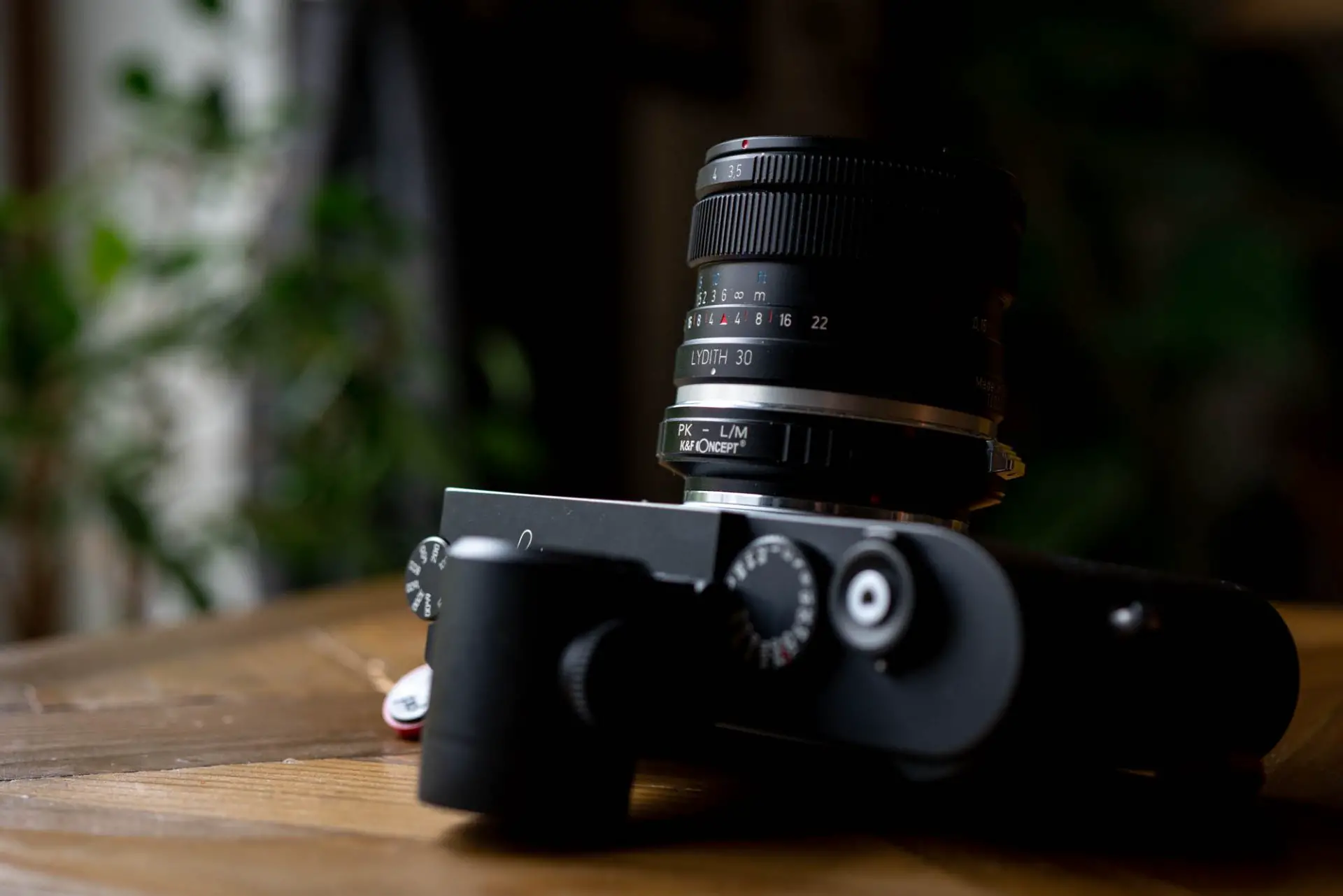








Comments
Ralph Turner on Meyer Optik Gorlitz 30mm f/3.5 Lydith II (The New Version) Review
Comment posted: 01/02/2021
Eric Rose on Meyer Optik Gorlitz 30mm f/3.5 Lydith II (The New Version) Review
Comment posted: 02/02/2021
Comment posted: 02/02/2021
Matthias on Meyer Optik Gorlitz 30mm f/3.5 Lydith II (The New Version) Review
Comment posted: 03/02/2021
Both were no good copies in terms of sharpness, sample variation is huge with these. But both had good contrast and nice colors, the new coatings of the remake surely improve this further.
But I know people owning good copies and I saw really nice images with them. Good copies of the original Lydith should get sharp across the frame (perhaps not in the extreme corners) at f8 on 24MP Sony A7xx cameras and certainly on film.
So I don't understand why the nicely done remake is so soft in the corners even stopped down. This lens design can deliver sharp images, so for the price of the new Lydith, it should get sharper stopped down.
But it's really great that OPC kept the Meyer Görlitz label alive, making charakter lenses.
TFM on Meyer Optik Gorlitz 30mm f/3.5 Lydith II (The New Version) Review
Comment posted: 05/07/2021
I concur with what you say. My experience (only one copy): Lydith is always sharp and contrasty in the center, gets sharper on edges stopping down, and never gets tack sharp in extreme corners, unlike e.g. a Super Takumar 28 from roughly the same period (which performs superior anywhere except character and MFD).
However, the sample variation I chalk up to CLA, not to the original state of the lens, which is hard to know for sure. Corners on mine were horrible, until I disassembled the full lens group and reassembled them. Extreme corners are now OK-ish, a big improvement, softness is mostly visible only when pixel peeping. The second lens element from the front looks almost symmetrical but in fact is not. The roundest part should point outward. I suspect this might have gotten mixed up on a lot of copies when putting it back together after service.
@Hamish:
I love the first wall shot with the water. That OOF rendering is exactly why I like to shoot Meyers. Fantastic to see how accurately they emulated that in this new version. The Community Hub photo at F/8 seems misaligned, explaining the softness on the right. The left side is markedly sharper. Could be a lens element not sitting level, could be the camera not being completely aligned. I see the right edge falling off long before reaching the edge. Lydith is capable of more. However, it also has major field curvature. Focussing on the center means the edges/corners of the flat wall are in front of the focus 'plane'.
Jens Knappe on Meyer Optik Gorlitz 30mm f/3.5 Lydith II (The New Version) Review
Comment posted: 15/11/2021
Eine davon ist gut, die zweite sehr gut. Bei Offenblende kann man es schon gut benutzen, ich nehme das Objektiv nur auf Prakticas oder auf der Contax RTS. Es ist ein Spitzen-Weitwinkel, sehr gute Farben, ab f5.6 weite Teile des Bildes scharf und ab f8 auch bis in die Ecken. Dazu ist das Objektiv noch sehr klein und passt in jede Jackentasche.
Man will ja nicht immer eine Tasche herumtragen.